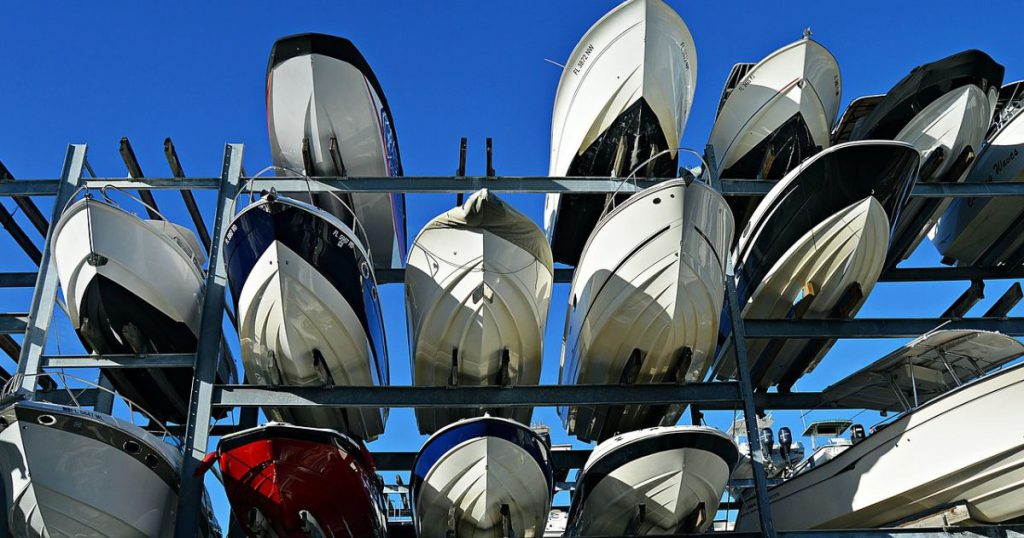
Owning a boat or recreational vehicle is one of the joys of living on Florida’s Gulf Coast. Yet, between homeowners’ association rules and the relentless Florida sun, parking a 25‑foot center console or a 35‑foot fifth‑wheel in your driveway at home isn’t always practical.
Many residents turn to RV storage in Tampa and boat storage facilities in Tampa for a convenient solution designed to handle Florida’s climate. In this guide, we’ll explore the benefits of professional boat and RV storage and the different storage options in Tampa, and the estimated boat and RV storage costs—and we’ll also offer some of our favorite tips to prepare your vehicle or vessel for storage.
Benefits of Using Boat and RV Storage in Tampa
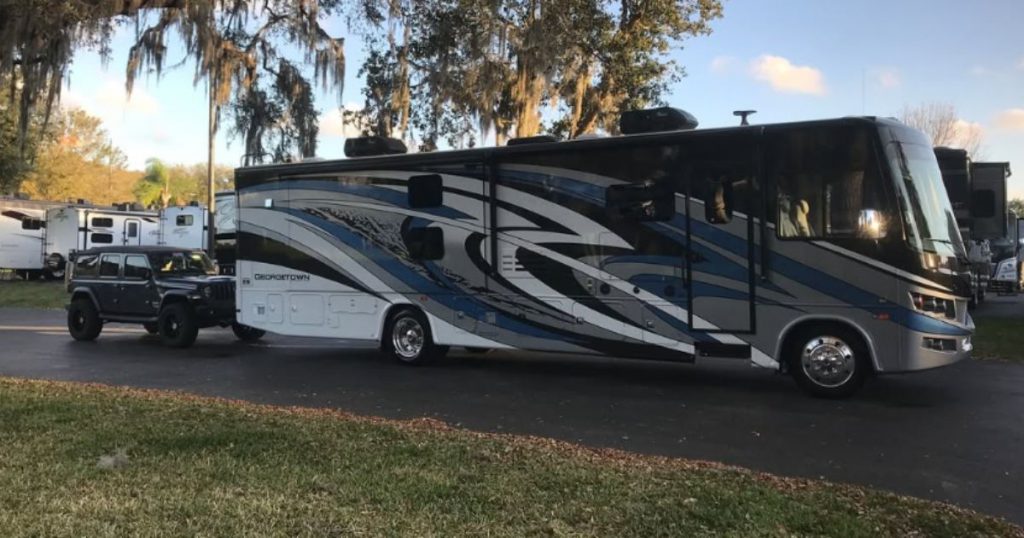
Storing a vessel or RV off‑site comes with several advantages, allowing you to:
- Protect Your Investment: Tampa’s humid, salty climate can corrode metal parts and degrade paint. Full‑service dry racks keep boats out of the water, which helps prevent hull damage and propeller corrosion. Covered RV storage may reduce sun damage.
- Comply with Local Ordinances: Many neighborhoods limit the size or types of vehicles that may be parked at home. Florida boating regulations also require proper storage and maintenance. Dedicated facilities provide a place to keep your boat or RV without worrying about HOA fines or breaking local regulations.
- Free Up Space at Home: Parking a 30‑foot motorhome or a trailer plus tow vehicle can crowd a driveway. Using a storage facility clears valuable space for daily vehicles and enhances curb appeal.
Types of Boat Storage in Tampa, FL
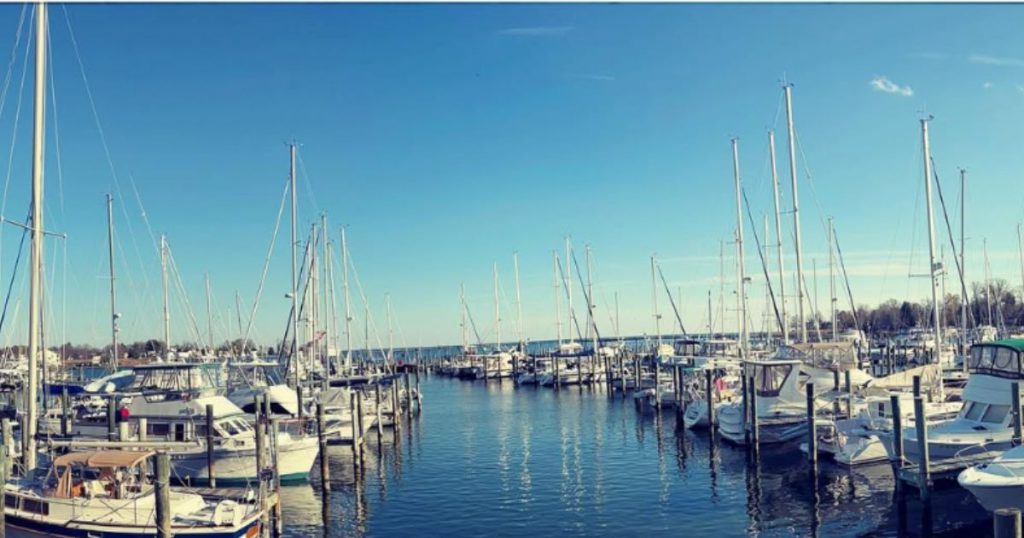
Tampa Bay’s boating community is diverse, and so are its storage options. Understanding each type will help you choose the right solution.
Dry Rack Storage
Dry rack storage (often called “hi-&-dry” in Florida) keeps vessels on multi‑level racks away from the water. Several marinas around Tampa Bay offer dry rack or hi-&-dry storage for boats, often up to about 30–35 feet, with benefits like periodic engine flushing and discounted rates for longer contracts.
While dry rack storage helps keep your boat clean and better protected from the sun, it can be pricey for larger vessels, requires advance scheduling, and isn’t suitable for taller boats.
Wet Slips
Wet slips are docking spaces in the water where your boat stays afloat rather than on a rack or trailer. Around Tampa Bay, many marinas offer wet slips for boats of various sizes, with utilities like shore power, water hookups, and dock boxes.
Wet slips are convenient thanks to instant access to the water, and they’re often the most practical option for larger boats or sailboats that can’t be stored on racks. However, they come with higher costs, separate utility fees, and exposure to weather and marine growth—making regular maintenance a must.
Covered Boat Storage and On‑Trailer Storage
Some storage facilities in Tampa Bay offer gated spaces where you can keep your boat on its trailer, sometimes with the option of covered parking for added protection from the sun.
This option gives boaters flexibility—your vessel is ready to tow and launch whenever you choose, instead of having to schedule in advance. On-trailer storage is also often more budget-friendly than dry rack storage or wet slips.
That being said, on-trailer storage puts the responsibility for trailer maintenance and launching on the owner, and some facilities may require long-term commitments or extra fees.
How to Store a Boat the Right Way
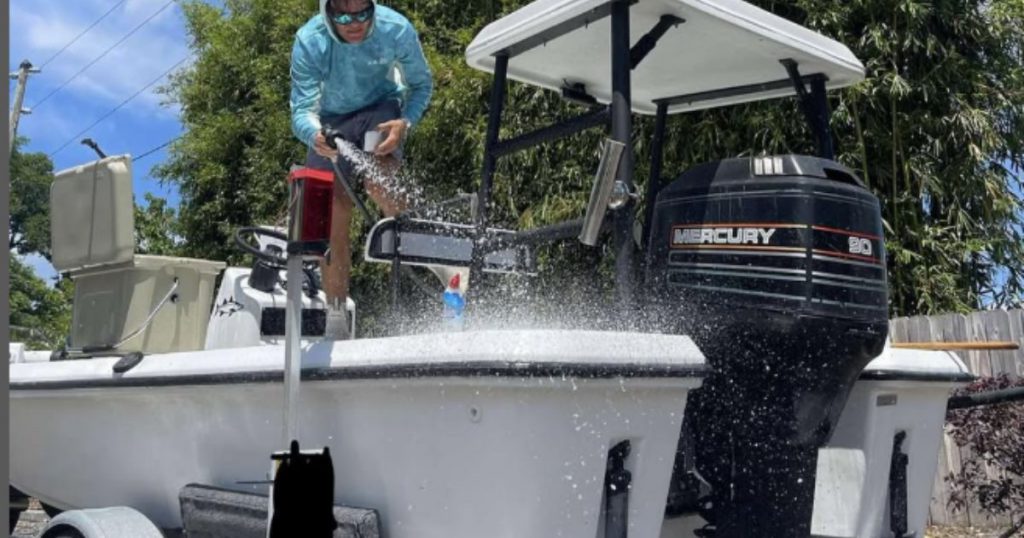
Proper preparation ensures your boat comes out of storage in good shape. The following tips apply to any type of boat storage.
Clean and Maintain the Vessel
Before putting your boat into storage, start with a thorough cleaning, particularly around the hull and deck. Clean interior surfaces and remove perishables.
Next, take care of routine maintenance. Check the engine, battery, and electrical components for wear. Replace engine oil and filters, and ensure the propeller is free of debris.
Choose the Right Storage Type
Carefully weigh the options listed above and choose what’s best for your needs. Indoor storage offers full protection from Florida’s elements, whereas outdoor storage may be adequate for short‑term or seasonal layups (times when your boat is out of use). Dry stack storage is convenient but can be costly. Consider how often you plan to use your boat and your budget before making any commitments.
Prepare for Storage
By taking a few precautionary steps, you can ensure your boat stays in good condition while in storage:
- Disconnect the Battery: Remove the battery or use a trickle charger if you’re storing your boat long-term.
- Treat Fuel: Add a fuel stabilizer to prevent corrosion.
- Cover and Secure: For an outdoor storage facility, invest in a quality cover (or professional shrink-wrapping for long-term storage) and secure the boat with sturdy straps. A standard boat cover is usually adequate for indoor storage.
- Remove Valuables: Don’t forget to take your electronics and other personal items home with you.
Winterize (If Applicable)
Tampa’s winters are mild, so most local boaters skip winterization. However, if you plan to take your boat north and store it in freezing temperatures, take the following steps: Drain and flush the engine, add antifreeze, and remove water from plumbing systems.
What Is the Average Cost to Store a Boat?
The cost of storing a boat varies based on storage type, boat size, and amenities. Pricing for boat storage in Tampa ranges from about $15 to $20 per foot per month for dry rack/hi-&-dry or premium marinas. This is usually calculated based on your boat’s LOA (Length Overall—that is, the full length from bow to stern, including swim platforms or motors). Less premium lots or outdoor trailer storage are often a lot more affordable.
Types of RV Storage in Tampa, FL
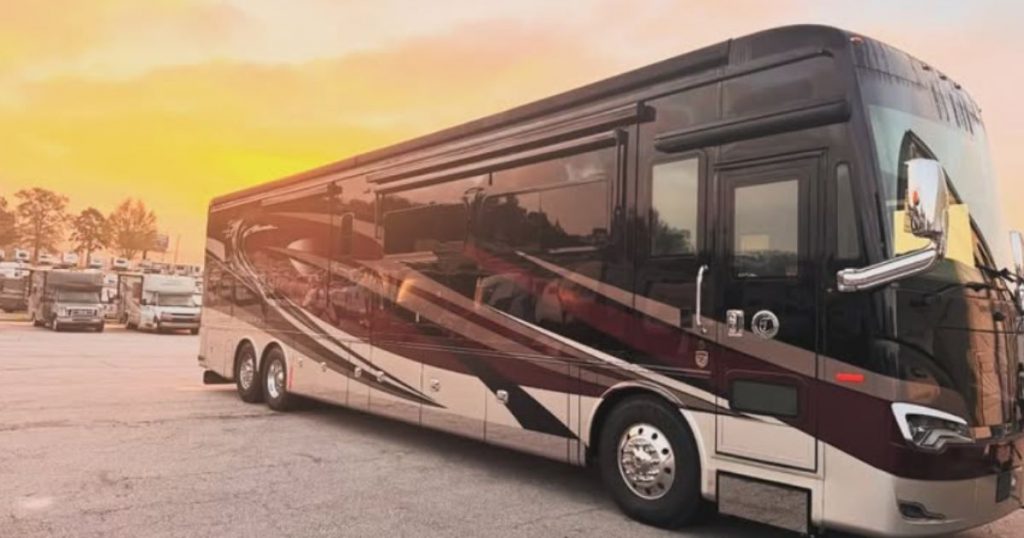
Like boats, RVs require thoughtful storage. There are several options for RV storage in Tampa, FL, depending on your budget and the level of protection you need.
Indoor or Enclosed RV Storage
Indoor storage reduces weather damage and is ideal for long‑term or high‑value rigs. Pricing depends on unit size, climate control, and location within the city.
Outdoor Uncovered RV Storage
Uncovered storage is essentially a reserved parking spot in a fenced lot. This option is budget‑friendly and often offers extended access hours. As your RV will be exposed to sunlight and storms, using an RV cover is critical.
Outdoor Covered RV Storage
Covered storage provides a roof but open sides, protecting the roof of your vehicle from UV rays and reducing heat buildup, but still leaving it vulnerable to Tampa’s climate. Covered storage is a good middle ground for owners seeking extra protection without the higher cost of indoor spaces.
How to Store an RV the Right Way
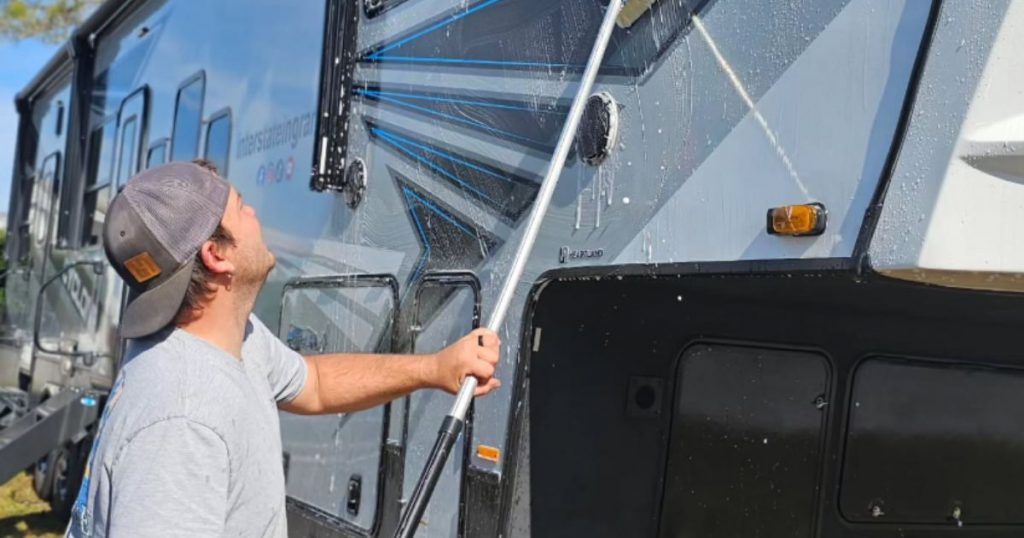
Taking steps to properly prepare for RV storage in Tampa, FL, extends the life of your motorhome and ensures a smooth return to the road. Follow these tips for storing an RV before you park your vehicle for the season:
Remove Food and Perishables
Take all food out of your refrigerator and cupboards (including dry foods) to prevent attracting rodents or insects.
Protect Tires
Cover tires to shield them from Tampa’s intense UV rays, and consider placing your RV on blocks to take weight off the tires. This prevents flat spots and cracks.
Drain and Add Fluids
Drain the water system completely to prevent bacterial growth. Check and top off engine coolant in the radiator and add fuel stabilizer to the gas tank. While in colder climates, antifreeze may be needed to protect plumbing from freezing, you can usually skip this step in Tampa.
Cover the RV
Indoor storage offers the best protection from Tampa’s hot, humid, and rainy weather. If that’s not an option, invest in a breathable RV cover to guard against UV damage and rain.
Prevent Moisture Buildup
Managing humidity levels is crucial—aim to keep relative humidity below 60 percent inside the RV. Install roof vents or run a dehumidifier and use moisture‑absorbing products such as desiccants.
Disconnect the Battery
Remove or disconnect the battery to prevent parasitic drains and keep it on a charger during storage.
Clean Interior and Exterior
Thoroughly clean and wax the RV, defrost the fridge, and wipe down surfaces. Make sure everything is dry before covering the vehicle.
Seal Off Entry Points
Seal vents and openings, and use steel wool or pest deterrents to block potential entry points. Mothballs or essential oils can help deter rodents.
How Much Does It Cost to Store an RV in Tampa?
In Tampa, indoor and climate‑controlled units typically range from about $200 to $450 per month, depending on size and amenities.
Outdoor RV storage is generally more affordable, with rates often between $90 and $200 per month. Many self-storage facilities offer amenities like gated access, video recording, and sometimes covered spaces, making outdoor storage a practical choice for RV owners who don’t need full climate control. Get a boat storage quote today.
Finding the Best RV and Boat Storage in Tampa, FL
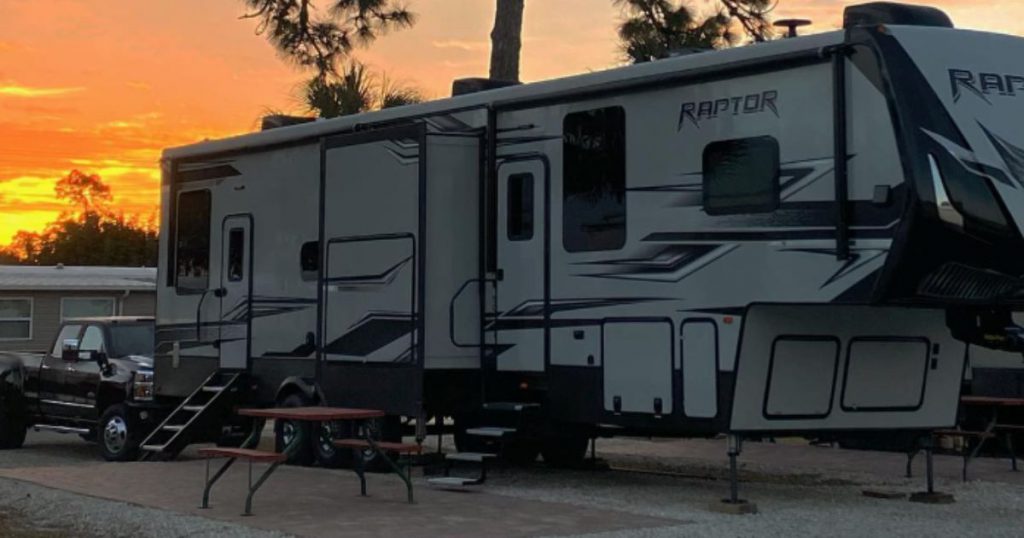
Choosing a storage facility means weighing convenience and cost to find the right fit for your needs. Before signing a lease, think about how often you’ll use your vessel or vehicle and what amenities are worth paying for. Understanding the right storage unit size for your needs is also important.
What to Look For
- Location and Access: Pick a facility close to home, work, or your favorite boat ramp. Look for extended access hours that accommodate your schedule.
- Size and Type of Space: Measure your RV or boat (including trailer and motor) to ensure it fits. Decide whether you need a covered carport, a dry rack, or a climate‑controlled indoor unit based on the guide above.
- Coverage from Elements: For boats, indoor or covered storage helps keep vessels shielded from Tampa’s climate. For RVs, covered or indoor spaces help prevent sun damage, moisture, and rust.
- On‑Site Services: Some marinas and specialty RV lots provide extras like unlimited launches, pressure washing, dump stations, or power hookups. At self-storage facilities, these services usually aren’t included, but they may not be necessary depending on your needs.
- Features and Amenities: Look for gated access with keypad entry or app entry, perimeter fencing, and 24-hour video recording. Many facilities also have on-site managers during business hours, but it’s unlikely you’ll find live monitoring or staff present 24/7.
For more detailed information about boat storage best practices, check out our comprehensive boat storage guide.
Make Space for Your Tampa Adventures
Having a boat or RV in Tampa should be about enjoying the water and hitting the road—not worrying about storage. By understanding the types of storage available and preparing your vehicle or vessel properly, you’ll be ready to choose the solution that fits your lifestyle and budget.
CubeSmart makes boat and RV storage in Tampa, FL, simple with options for climate-controlled, covered, and outdoor units. Find a CubeSmart storage facility near you.




